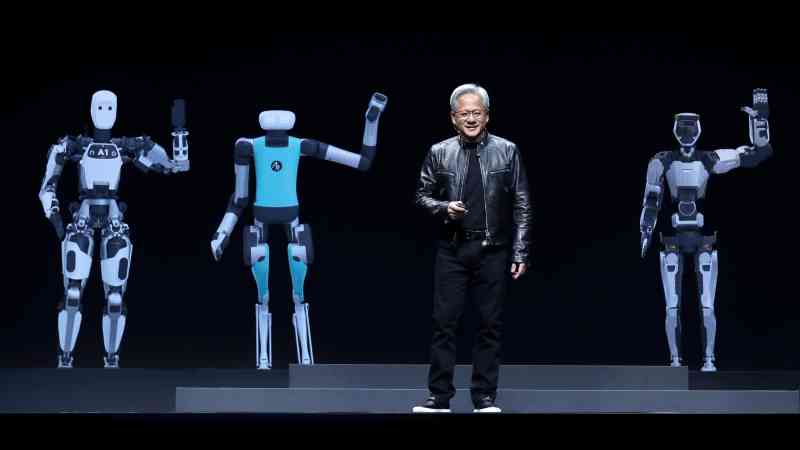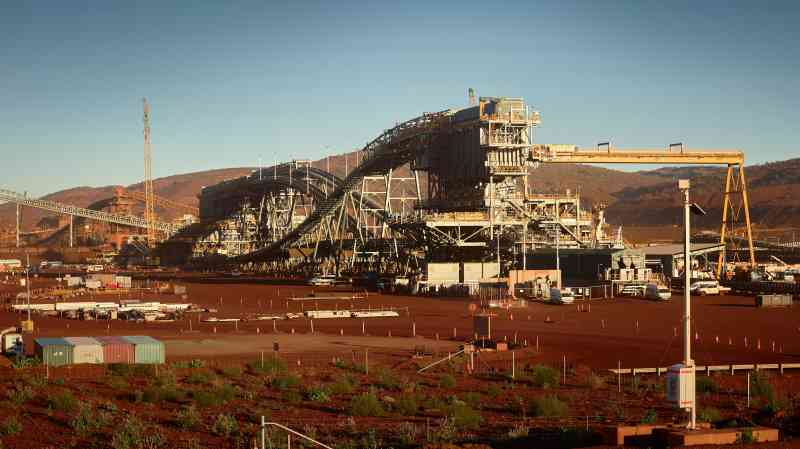Why Nvidia’s results are likely to move markets
Nvidia, the artificial intelligence chip designer, is expected to announce sales have more than doubled in a year when it reports its highly anticipated quarterly earnings tonight.
Analysts are predicting $28.6 billion of sales for the second quarter, a rise of 112 per cent on the same period last year. Operating income is forecast to rise 142 per cent to $18.8 billion.
The chip designer, founded in Santa Clara, California, in 1993 and led by Jensen Huang, was trading at just $16.26 a share two years ago but now trades at around $128 on the back of a huge growth in demand for its advanced computer chips and data centre infrastructure from companies betting on the transformative impact of generative AI.
Investors are braced for a big share price reaction in either direction after Nvidia reports its earnings on Wall Street after the bell.
Some analysts have speculated that the results could have a bigger impact on the US stock market than the Federal Reserve chairman Jerome Powell’s speech at Jackson Hole in Wyoming last week, when he boosted expectations of a rate cut in September.
“Move over, Powell,” said Anthony Saglimbene, chief market strategist at Ameriprise Financial. “It’s Jensen Huang’s turn to move markets. In our view, Nvidia’s earnings report this week may actually have more impact on the overall market than Powell’s Jackson Hole speech last week.”
Nvidia is the second-largest company by market value in the S&P 500 and Nasdaq. It accounts for 21 per cent of the S&P 500 information technology index, according to Ameriprise Financial.
Having briefly taken the title of world’s most valuable listed company in June, its latest market capitalisation of around $3.16 trillion puts it behind Apple’s $3.47 trillion but ahead of Microsoft’s $3.06 trillion valuation.
Only five years ago Nvidia’s sales were driven by video games, which use its chips to power the creation of high-resolution images.
However, in the most recent quarter, gaming accounted for only around 10 per cent of revenue, while the data centres unit, which includes AI chips, accounted for 87 per cent of sales.
More than half of its sales came from the US, where customers include Meta, the owner of Facebook, Microsoft, Tesla and Alphabet, the owner of Google.
Nvidia claims to have invented the graphics processing unit (GPU) in 1999. The hardware is made from electronic circuits that can perform mathematical calculations on large datasets in parallel and at high speed.
Nvidia’s powerful GPUs are used to build servers in data centres, which can speed up a range of workloads from generative AI training to scientific computing.
More than 40,000 companies use the GPUs, ranging from carmakers and drug discovery businesses to weather forecasters and social media giants.
Nvidia’s shares have been volatile amid fears it is fuelling a stock market bubble and worries around the resilience of its supply chain and the strength of future demand for its chips.
Investors will be listening closely to the earnings call with Huang, 61, Nvidia’s founder and chief executive, to see if he responds to reports of delays to the production of Nvidia’s next generation AI chip, called Blackwell.
At the company’s last quarterly update in May, Nvidia said it planned to ship samples of the chip in the second quarter before ramping up shipments in the second half of the year.
Options prices show traders are braced for a near 10 per cent swing in Nvidia’s shares after the results, translating in dollar terms to more than $300 billion in market value.
The shares closed up $1.84, or 1.5 per cent, at $128.30 in New York on Tuesday.






